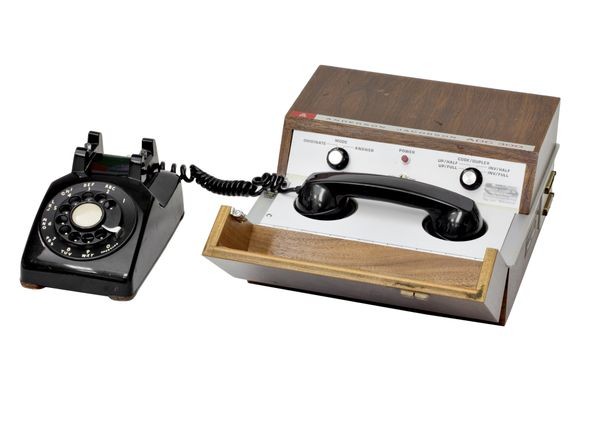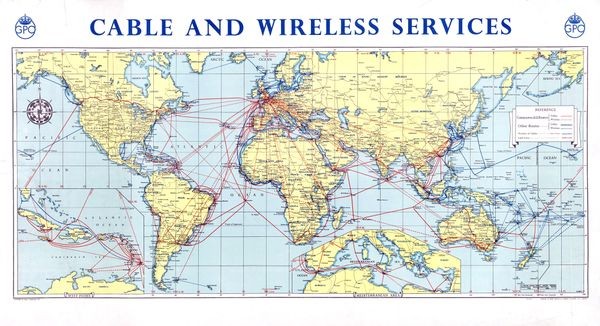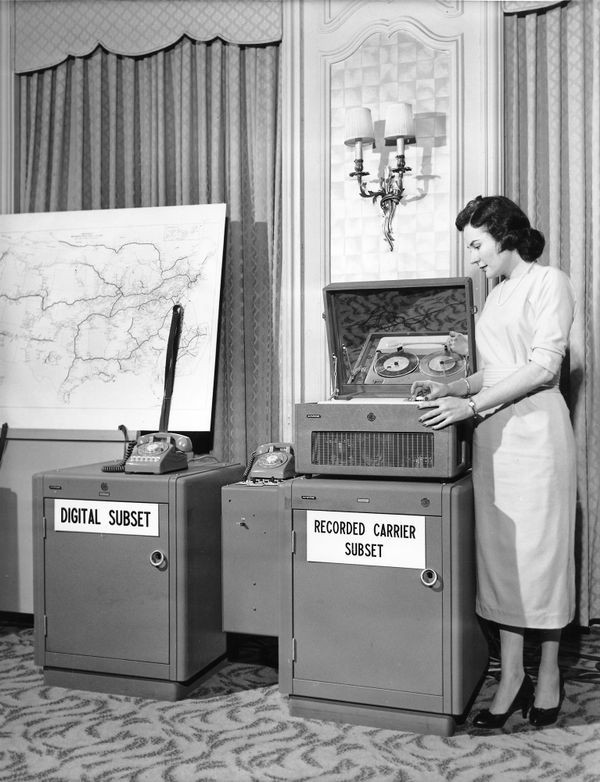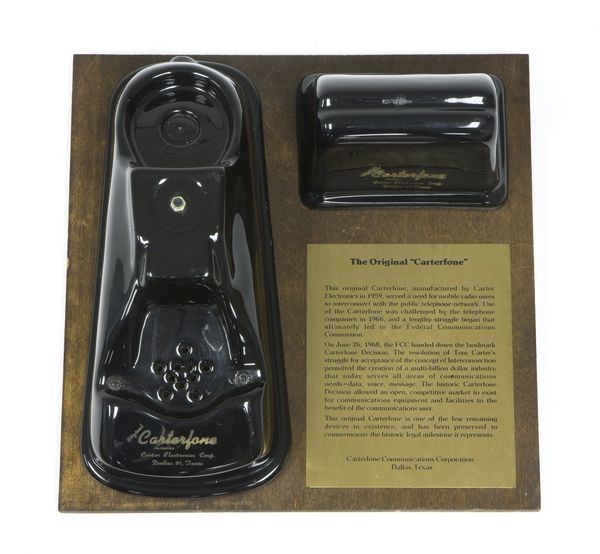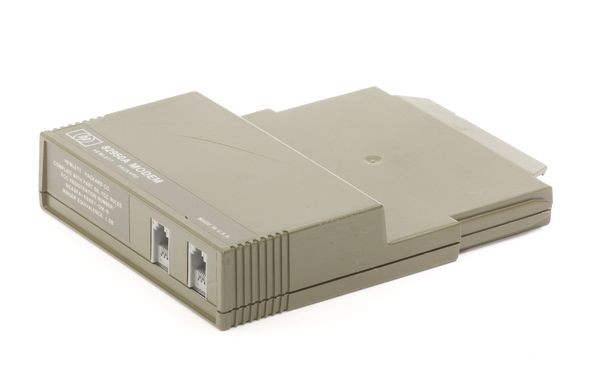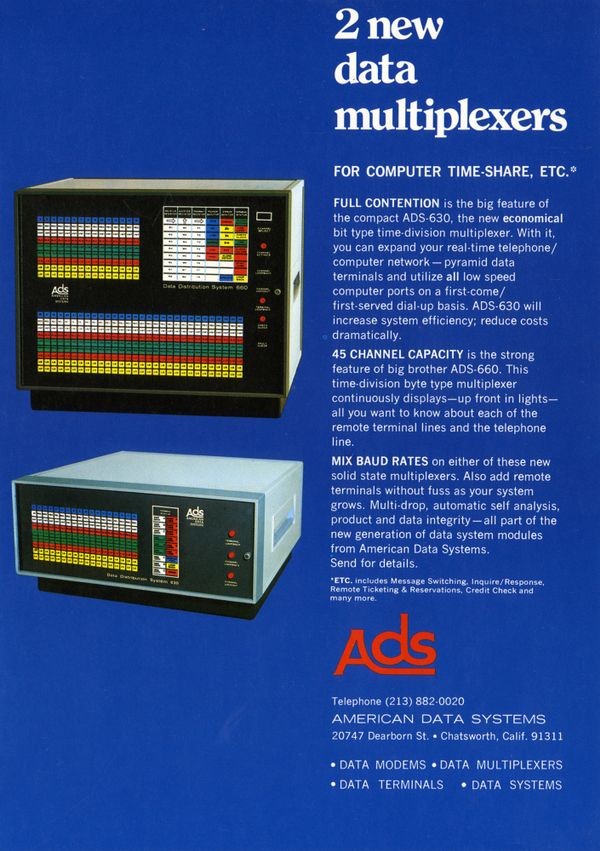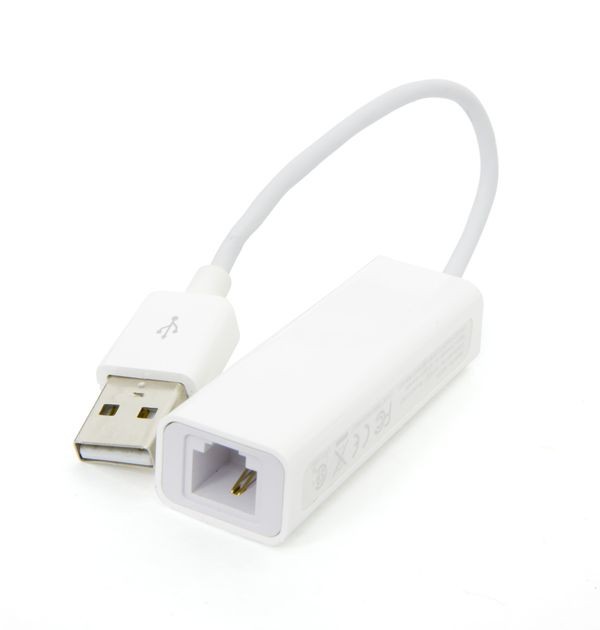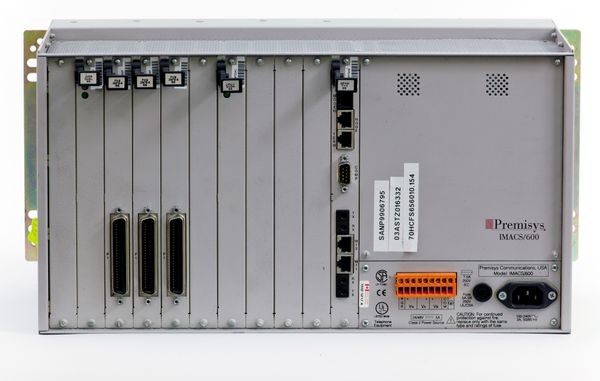Connecting Over Phone Lines
Anderson Jacobson Model ADC-300 modem
Some early modems used an “acoustic coupler” for the telephone handset, eliminating the need to wire them directly to phone lines. Hinged covers and foam padding isolated couplers from room noise.
Connecting Over Phone Lines
Telecommunications was already a century old when digital computers appeared in the 1940s using similar technology: relays and vacuum tubes. Connecting computers to telegraphy devices such as teleprinters and paper-tape readers was natural.
Leasing telegraph lines was expensive, however. Could computers send data over switched telephone lines instead? Yes, with “modems”—devices that turned digital data into sound for transmission, then back into data.
Until the 1960s, computers mostly used phone and telegraph equipment to communicate. Only as they began connecting to other computers did systems optimized for computer communication develop.
Telephone switching office
By the late 1940s, automatic electromechanical telephone switches were replacing human operators.
View Artifact DetailTelecommunications systems map
By the 1940s, a mix of telephone and telegraph services connected nearly every inhabited place on earth. Most data traveled over wires, and some over radio links.
View Artifact DetailTeleprinters
With roots in 1840s printing telegraphs and 1860s tickertape machines, teleprinters had become mainstays of global messaging and text broadcast systems by the 1920s. Punched paper tape automated message transmission.
An elaborate teleprinter network supported global newswire services such as AP and Reuters. Later, teleprinters served as early computer terminals.
Teletype Model 28 typing unit and printer
Designed in the pre-computer era, teleprinters were ideal terminals for communicating with computers. This rugged model transmitted and received 5-bit Baudot code. It printed 6 characters per second using a movable block with 64 type slugs.
View Artifact DetailComputers Learn to “Talk”
Telephone networks carry sound: our voices. Using them for data required giving computers a voice.
The modem, developed at MIT’s Lincoln Labs in 1949, modulates computer data into sounds, and demodulates received sounds into digital data. (MODulation + DEModulation = MODEM.) Court decisions compelled telephone monopolies to open their lines to competitors’ modems.
Early modem from AT&T
AT&T’s Bell Laboratories began developing modems for its own internal use by the mid-1950s. AT&T later sold the Bell 103 model, and did not permit competing modems on its lines.
View Artifact DetailOriginal Carterfone
The Carterfone acoustically connected mobile radios to the telephone network. Telephone companies sued in 1966. The FCC supported Carter, freeing U.S. telephone lines for many uses—including later answering machines, faxes and modems. Users in some countries waited until the 1990s.
View Artifact DetailModem
This 300 baud (about 30 character-per-second) modem was sold for the HP Series 80 desktop scientific/engineering computers. Like many modems, it was compatible with the original Bell 103 modem standard, and connected directly to the phone line.
View Artifact DetailADS multiplexers advertisement
“MUX”s allowed multiple connections over the same lines, dramatically lowering costs for businesses. The multiplexer market became highly competitive.
View Artifact DetailApple USB modem
Modems to transmit digital data over voice circuits became obsolete as higher speed Internet connectivity over digital phone and cable TV lines became the standard. This last of Apple’s modems was discontinued in 2009.
View Artifact DetailDigital Phone Lines
Phone companies developed digital transmission to put many calls on each line connecting their switching centers. By 1958, this had produced the T1 standard still used in North America. Phone companies were leasing digital lines to commercial customers by the 1980s.
T1 channel bank
This was the interface between the telephone company’s leased T1 line coming into a business, and the internal serial communication lines to the customer’s equipment. Each T-1 circuit transmitted about 1.5 million bits per second.
View Artifact Detail